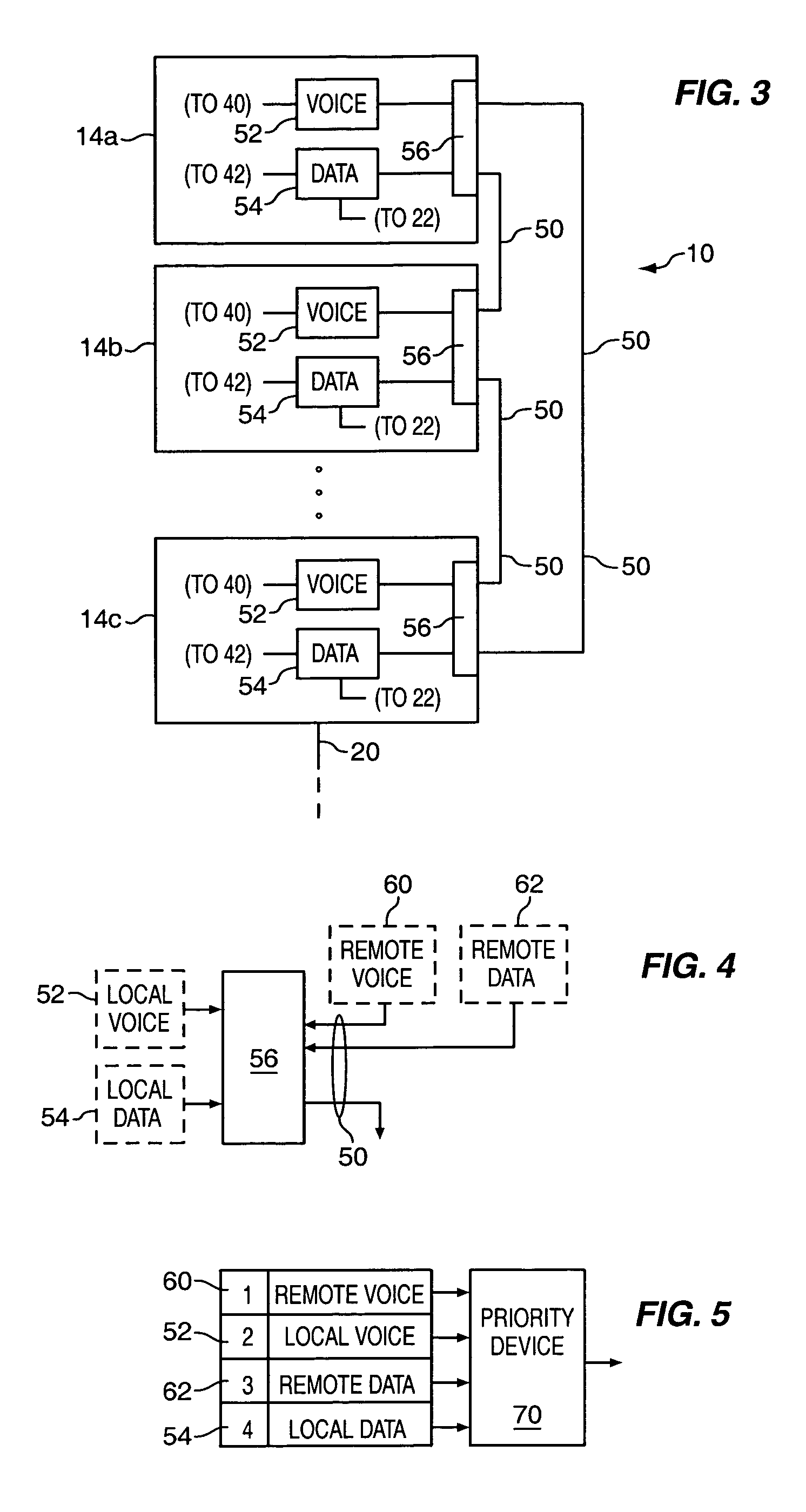System and method for prioritizing and communicating subscriber voice and data information
a subscriber voice and data information technology, applied in the field of communication, can solve the problems of scaling, ongoing maintenance costs, and limitations of the generality of data services available, and achieve the effect of substantially reducing the disadvantages and problems of previous systems and methods for communicating voice and data information
- Summary
- Abstract
- Description
- Claims
- Application Information
AI Technical Summary
Benefits of technology
Problems solved by technology
Method used
Image
Examples
Embodiment Construction
[0022]FIG. 1 illustrates an exemplary system 10 for communicating information in a subscriber community to provide integrated audio, video, data, and other appropriate services to subscribers. The subscriber community may include a business, apartment complex, retirement community, correctional facility, or any other customer premises in which subscribers share communications infrastructure and resources. Each subscriber in the served community has one or more associated telephones, personal computers, facsimile machines, or other devices to interface with the public switched telephone network (PSTN) or other telephone network, a local area network (LAN), metropolitan area network (MAN), wide area network (WAN), a global network such as the Internet, or any other suitable networks. Such devices may be referred to collectively, where appropriate, as subscriber devices 12. Network access switch 14 is coupled to subscriber devices 12 using subscriber lines 16 (and their subscriber line...
PUM
 Login to View More
Login to View More Abstract
Description
Claims
Application Information
 Login to View More
Login to View More - R&D
- Intellectual Property
- Life Sciences
- Materials
- Tech Scout
- Unparalleled Data Quality
- Higher Quality Content
- 60% Fewer Hallucinations
Browse by: Latest US Patents, China's latest patents, Technical Efficacy Thesaurus, Application Domain, Technology Topic, Popular Technical Reports.
© 2025 PatSnap. All rights reserved.Legal|Privacy policy|Modern Slavery Act Transparency Statement|Sitemap|About US| Contact US: help@patsnap.com



